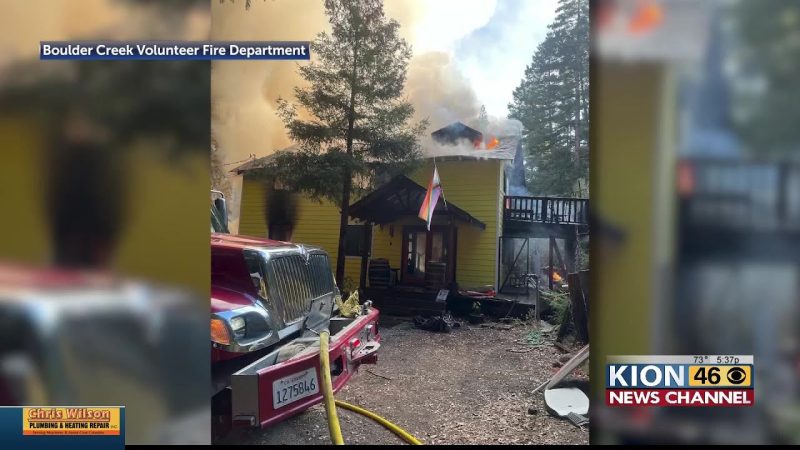Navigating the Challenges: San Luis Obispo County Evacuations

San Luis Obispo County, nestled on California’s picturesque central coast, is a region known for its stunning landscapes and vibrant communities. However, the serenity of this coastal haven can be disrupted by natural disasters, compelling residents to face the challenging prospect of evacuations. Evacuations are a critical aspect of emergency preparedness, aiming to ensure the safety and well-being of the community in the face of potential hazards. This article delves into the dynamics of San Luis Obispo County evacuations, exploring the reasons behind them, the measures taken to facilitate smooth evacuations, and the resilience demonstrated by the local population.
Understanding the Need for Evacuations:
San Luis Obispo County, like many other regions, is susceptible to various natural disasters, including wildfires, floods, and earthquakes. These incidents pose a significant threat to the safety of residents, necessitating the implementation of evacuation plans. Wildfires, in particular, have been a recurring challenge for the county, with dry conditions and strong winds creating an environment conducive to rapid fire spread. To protect lives and property, local authorities often issue evacuation orders when the risk of wildfires or other disasters reaches a critical level.
Emergency Preparedness and Communication:
A key component of successful evacuations is effective emergency preparedness and communication. San Luis Obispo County has invested in robust emergency management systems to ensure timely and accurate dissemination of information to residents. The use of advanced technologies, including alert systems, social media, and traditional media channels, allows authorities to reach a broad audience quickly. Residents are provided with detailed instructions on evacuation routes, designated shelters, and safety protocols.
Community Engagement and Education:
Community engagement and education play a pivotal role in ensuring that residents are well-informed and prepared for evacuations. Local authorities conduct outreach programs, workshops, and drills to familiarize the population with evacuation procedures and emergency protocols. By fostering a culture of preparedness, residents become active participants in their own safety, reducing the likelihood of panic and confusion during evacuation events.
Evacuation Routes and Shelters:
San Luis Obispo County has established well-defined evacuation routes to streamline the process and minimize traffic congestion during evacuations. These routes are strategically planned to lead residents away from danger zones and towards safer areas or designated shelters. Additionally, the county collaborates with neighboring regions to facilitate coordinated evacuations, ensuring a comprehensive and organized response to emergencies.
The Role of Emergency Services:
Emergency services, including fire departments, law enforcement, and medical personnel, play a crucial role in executing evacuation plans. These professionals work tirelessly to ensure the orderly evacuation of residents, provide assistance to vulnerable populations, and manage the overall response to emergencies. The collaborative efforts of various agencies contribute to the effectiveness of evacuation operations in San Luis Obispo County.
Challenges and Lessons Learned:
Despite meticulous planning, evacuations are not without challenges. Traffic congestion, unpredictable weather conditions, and the need for rapid decision-making can complicate evacuation efforts. However, each evacuation serves as an opportunity to identify areas for improvement and refine emergency response strategies. Lessons learned from past incidents contribute to the ongoing enhancement of evacuation plans, ensuring a more resilient and adaptive system.
Community Resilience:
One of the most inspiring aspects of San Luis Obispo County evacuations is the resilience demonstrated by the local community. In the face of adversity, residents come together to support one another, offering assistance to those in need and embodying the spirit of solidarity. Community organizations, volunteers, and local businesses play a vital role in providing resources, shelter, and emotional support during challenging times.
Climate Change and Future Challenges:
As the impacts of climate change become more pronounced, San Luis Obispo County, like many other regions, faces new challenges in terms of the frequency and intensity of natural disasters. Rising temperatures, prolonged droughts, and changing weather patterns contribute to an evolving landscape of risk. Adapting evacuation plans to address these shifting dynamics is essential to ensuring the continued safety of the community.
Conclusion:
San Luis Obispo County evacuations are a testament to the community’s resilience and the dedication of local authorities in safeguarding lives and property. Through a combination of effective emergency preparedness, communication strategies, and community engagement, the county has built a robust system to navigate the challenges posed by natural disasters. As the region continues to evolve and face new threats, ongoing collaboration, innovation, and a commitment to adaptability will remain key elements in ensuring the safety and well-being of San Luis Obispo County residents.





